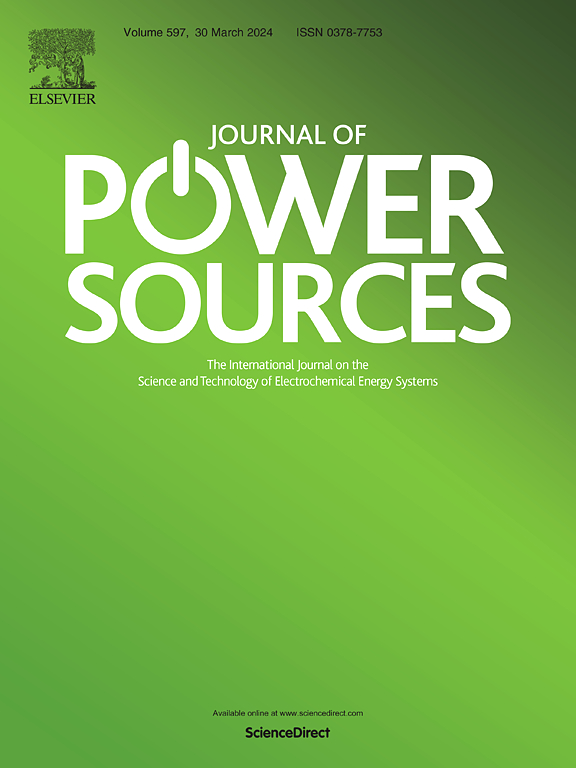Tailoring Mo/W ratio in Mo/WO3@ZnIn2S4 for regulating the round-the-clock photocathodic protection
IF 8.1
2区 工程技术
Q1 CHEMISTRY, PHYSICAL
引用次数: 0
Abstract
The low sustainable current density in darkness restricts the advancement of photocathodic protection (PCP) for steels in marine environments. A combination of MoO3/WO3 (Mo/WO3) was proposed as an electron storage system to enhance capacitance and charge/discharge rates. Subsequently, incorporating ZnIn2S4 (ZIS) extended light harvesting and improved photocarrier separation efficiency, resulting in efficient round-the-clock PCP performance. Under illumination, the open circuit potential (OCP) of 10Mo/WO3@ZIS coupled with 304SS reaches −0.97 V vs. Ag/AgCl, approximately 600 mV and 140 mV more negative than corrosion potential (Ecorr) of 304SS and WO3@ZIS coupled 304SS, whth photocurrent density of 134 μA/cm2. The excellent PCP performance is attributed to superior photocarrier separation and enhanced light-harvesting capability. Notably, in the dark, the OCP of the coupled system remains ca. 0.4 V below the Ecorr of 304SS, with an average current density of 30 μA/cm2, demonstrating the regulated electron storage capabilities of Mo/WO3. Furthermore, capacity and charge/discharge rates correlate with Mo/W ratio and electrolyte species. 10Mo/WO3@ZIS exhibits a charge capacity of 2.93 mC, nearly 3 times higher than that of WO3@ZIS. The innovative application of MoO3 and WO3 proves the potential to regulate the electron storage performance, revealing the factors for photoelectron storage/release.

求助全文
约1分钟内获得全文
求助全文
来源期刊

Journal of Power Sources
工程技术-电化学
CiteScore
16.40
自引率
6.50%
发文量
1249
审稿时长
36 days
期刊介绍:
The Journal of Power Sources is a publication catering to researchers and technologists interested in various aspects of the science, technology, and applications of electrochemical power sources. It covers original research and reviews on primary and secondary batteries, fuel cells, supercapacitors, and photo-electrochemical cells.
Topics considered include the research, development and applications of nanomaterials and novel componentry for these devices. Examples of applications of these electrochemical power sources include:
• Portable electronics
• Electric and Hybrid Electric Vehicles
• Uninterruptible Power Supply (UPS) systems
• Storage of renewable energy
• Satellites and deep space probes
• Boats and ships, drones and aircrafts
• Wearable energy storage systems
 求助内容:
求助内容: 应助结果提醒方式:
应助结果提醒方式:


